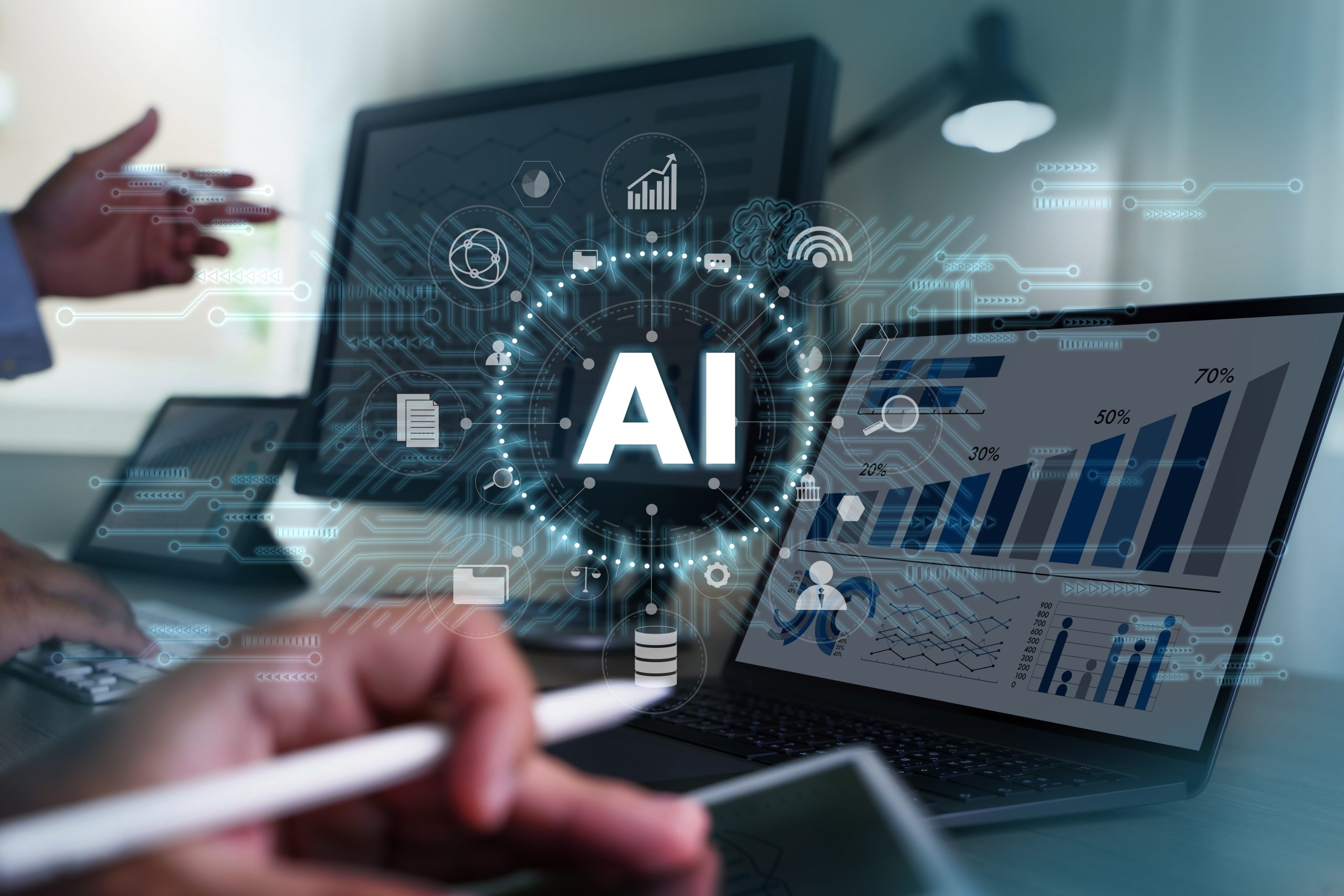Introduction
In the ever-evolving landscape of artificial intelligence, two giants stand out in the realm of AI conversational models: ChatGPT and Claude 2. These advanced technologies, embodying the pinnacle of machine learning and natural language processing, have revolutionized how we interact with AI. This article delves into the intricacies of both models, comparing their features, capabilities, and the tradeoffs involved in their usage. As AI continues to shape our digital world, understanding these tools is crucial for anyone looking to harness the power of AI in communication, creativity, and information processing.

Section 1: Understanding ChatGPT and Claude 2
ChatGPT: Background and Development
ChatGPT, developed by OpenAI, is a variant of the GPT (Generative Pre-trained Transformer) series. Rooted in GPT-4, it’s renowned for its deep learning algorithms that enable understanding and generating human-like text. This model is trained on a diverse range of internet texts, enabling it to engage in conversations, answer questions, and even mimic certain writing styles. However, it’s essential to note that ChatGPT’s training data only extends up to 2021, which poses limitations in terms of current events and trending topics.
Claude 2: Introduction and Evolution
On the other hand, Claude 2, introduced by Anthropic, is a model that has piqued the interest of the tech world with its impressive token capacity and updated knowledge base. Unlike ChatGPT, Claude 2’s training includes information from 2022 and early 2023, making it more attuned to current affairs. This model stands out for its ability to handle extensive conversations, thanks to its significant token limit, enhancing its efficiency in processing lengthy documents and detailed discussions.
Market Relevance and User Base
In terms of market relevance, both models cater to a broad audience but with different focal points. ChatGPT is celebrated for its versatility and wide-range language support, making it a go-to for users needing multilingual communication. Claude 2, with its recent data and extended context window, appeals to users requiring up-to-date information and in-depth conversational capabilities.
Section 2: Bigger Context Window: The Power of Words
ChatGPT’s Context Window
ChatGPT’s context window, limited to 8,192 tokens (about 4,000 words), while sufficient for general conversations, encounters constraints when dealing with complex topics requiring extensive context. This limitation becomes apparent in scenarios like detailed document analysis, where the need for a broader context is essential.
Claude 2’s Extended Context Window
Contrastingly, Claude 2’s context window of 100,000 tokens (around 75,000 words) is a game-changer. This expansive capacity allows users to engage in more profound, nuanced discussions, process entire documents, and delve into complex topics without the fear of losing context. This feature is particularly beneficial for tasks like summarizing lengthy reports, comparing multiple documents, or engaging in detailed technical discussions.
Tradeoffs and Challenges
The tradeoff here is clear: while ChatGPT offers a broader range of applications due to its extensive training data and language support, Claude 2 excels in handling tasks that require a deep understanding over extended conversations. Users must weigh these factors when choosing between the two, considering the nature of their tasks and the depth of interaction required.
Section 3: Contextual Responses and Creativity
Claude 2’s Creative Edge
Claude 2 has been making waves with its proficiency in creative tasks. Its ability to quickly generate ideas, aid in writing, and offer editing suggestions is impressive. Users find its capabilities in crafting poems, speeches, and summaries particularly useful, showcasing its versatility. This creative edge stems from its training on vast datasets, enabling Claude 2 to engage users in fluid, imaginative conversations.
ChatGPT’s Approach to Creativity
ChatGPT, while versatile in its own right, tends to be more formulaic in its creative outputs. Its training allows it to mimic various writing styles and engage in creative tasks, but it sometimes lacks the spontaneous creativity that Claude 2 exhibits. This difference becomes evident in tasks requiring a high level of originality and creative flair.
Balancing Creativity and Practicality
The challenge for users lies in balancing the need for creativity with practical application. While Claude 2 might be the go-to for tasks requiring high levels of creativity and ideation, ChatGPT’s reliability and consistency make it a strong contender for more standardized creative tasks. Understanding the strengths and limitations of each model in terms of creativity and contextual understanding is crucial in making an informed decision for specific needs.
Section 4: Up-to-Date Knowledge and Information Processing
In the dynamic world of AI conversational models, the freshness of information is crucial. ChatGPT and Claude 2 approach this aspect differently, each with its strengths and limitations.
ChatGPT’s Knowledge Base
ChatGPT, based on GPT-4, is trained on data up to 2021, making it a reservoir of extensive historical knowledge. This vast database enables it to handle a wide array of topics, from classic literature to historical events with remarkable accuracy. However, the absence of real-time updates is a noticeable gap. For instance, if you ask ChatGPT about recent global events or advancements in technology post-2021, it might not provide the latest information.
Claude 2’s Updated Information
Contrastingly, Claude 2 stands out with its training data that includes updates from 2022 and early 2023. This feature makes it more attuned to current affairs and recent developments. Users looking for insights or information on contemporary topics might find Claude 2 more helpful than ChatGPT in this regard.
Balancing Act
The tradeoff here lies in choosing between the depth of historical knowledge and the relevance of current information. While ChatGPT offers a broad historical perspective, Claude 2 brings the latest information to the table. Users must consider the nature of their queries – whether they require detailed historical data or current insights – to make an informed choice between these two AI models.
Section 5: Multi-File Reading and Processing Efficiency
The ability to process and compare multiple files simultaneously is a game-changer in AI technology, and this is where Claude 2 excels.
Claude 2’s Multi-File Processing Capability
Claude 2 allows users to upload and process several documents at once. This capability is particularly beneficial for tasks that involve comparing and contrasting information from different sources. For instance, users can upload multiple research papers and ask Claude 2 to provide a comparative analysis or summary, streamlining their research process.
ChatGPT’s Approach
While ChatGPT also offers functionalities to process information from different sources, its smaller context window limits the extent to which it can compare and contrast complex documents. ChatGPT can handle multiple inputs effectively, but when it comes to processing large volumes of data simultaneously, Claude 2 holds an edge.
Efficiency and Tradeoffs
The decision between ChatGPT and Claude 2 in this regard depends on the user’s specific needs. If the task at hand involves in-depth analysis of large documents, Claude 2 is the more efficient choice. However, for more general inquiries or when dealing with smaller datasets, ChatGPT’s processing capabilities are more than sufficient.
Section 6: Speed of Processing: Comparing Response Times
In the fast-paced digital world, the speed of processing is a critical factor in the usability of AI conversational models.
Claude 2’s Faster Response Times
Reports suggest that Claude 2 boasts faster response times, averaging around 5 seconds per response. This speed is a significant advantage in scenarios where quick information retrieval or decision-making is required. Users working in dynamic environments, like live customer support or fast-paced research, may find this speed beneficial.
ChatGPT’s Processing Speed
ChatGPT, while not lagging far behind, is slightly slower compared to Claude 2. This difference in speed can be attributed to its extensive data processing requirements, given its vast training dataset. For users whose tasks are not time-sensitive, ChatGPT’s speed is more than adequate.
Choosing Based on Speed and Application
The choice between ChatGPT and Claude 2, in terms of processing speed, should be based on the specific application. If the task requires rapid responses, Claude 2 might be the better option. However, for users who prioritize depth and breadth of knowledge over speed, ChatGPT remains a strong contender.
Section 7: Token Size, Processing Time, Knowledge Base, and Pricing
Understanding the intricacies of AI models like ChatGPT and Claude 2 requires a deep dive into their token size, processing time, knowledge base, and pricing. These factors are crucial for anyone looking to leverage these technologies for their specific needs.
Token Size and Knowledge Base
The token size in AI models like ChatGPT and Claude 2 fundamentally influences their knowledge base and processing capabilities. ChatGPT, with its limit of 8,192 tokens, is adept at handling a wide range of queries but within a more condensed context. Claude 2, boasting a remarkable 100,000 token capacity, allows for more in-depth conversations and comprehensive data processing. This increased token size enables Claude 2 to delve into more extensive knowledge bases, making it ideal for complex tasks requiring broad context understanding.
Processing Time
Processing time in AI models is intrinsically linked to their token size. Models with larger token capacities, like Claude 2, often require more time for each response due to the increased data they process. However, Claude 2 has been optimized to maintain a balance, offering swift responses despite its large token size. ChatGPT, with its smaller token size, generally provides quicker responses, ideal for more straightforward tasks.
Pricing
The cost of using these AI models is another critical factor. Pricing is often based on token usage, which includes both input and output tokens. Larger models like Claude 2, despite their higher token capacity, offer competitive pricing, making them accessible for various applications. ChatGPT’s pricing structure, while also based on token usage, is aligned with its capabilities, offering a cost-effective solution for tasks not requiring extensive token capacity.
Section 8: Unique Features and Capabilities
Each AI model brings unique features and capabilities to the table, catering to diverse user needs.
ChatGPT’s Multilingual Support and API Integration
ChatGPT’s strength lies in its multilingual capabilities and API support, allowing developers to integrate this model into various applications seamlessly. Its ability to communicate in multiple languages makes it a versatile tool for global audiences.
Claude 2’s Precision and Creative Writing Abilities
Claude 2 shines with its precise knowledge and creative writing capabilities. Its ability to generate detailed and contextually rich content makes it a favorite for tasks requiring high levels of creativity and specificity.
Section 9: Limitations and Considerations
ChatGPT’s Limitations
Despite its impressive capabilities, ChatGPT faces limitations in factual accuracy and real-time data access. Its knowledge, based on a static dataset, may not always provide the most current information.
Claude 2’s Limitations
Claude 2, while excelling in many areas, has its own set of limitations. Its weaker performance in complex mathematics and limited geographic availability may affect its applicability for certain users.
Section 10: Conclusion and Final Thoughts
In the burgeoning field of AI conversational models, ChatGPT and Claude 2 stand out as frontrunners, each with its unique strengths and limitations. ChatGPT’s broad knowledge base and multilingual support make it a versatile tool for a variety of applications. Claude 2, with its large token capacity and updated information, is better suited for in-depth analysis and creative tasks.
The choice between ChatGPT and Claude 2 ultimately depends on the specific requirements of the task at hand. Users must consider factors like token size, processing time, knowledge base, and pricing, alongside the unique capabilities and limitations of each model, to make the most informed decision.
As AI technology continues to advance, the potential for even more sophisticated conversational models is vast. The journey of AI development is ongoing, and ChatGPT and Claude 2 represent just the beginning of what’s possible in this exciting and ever-evolving field.
